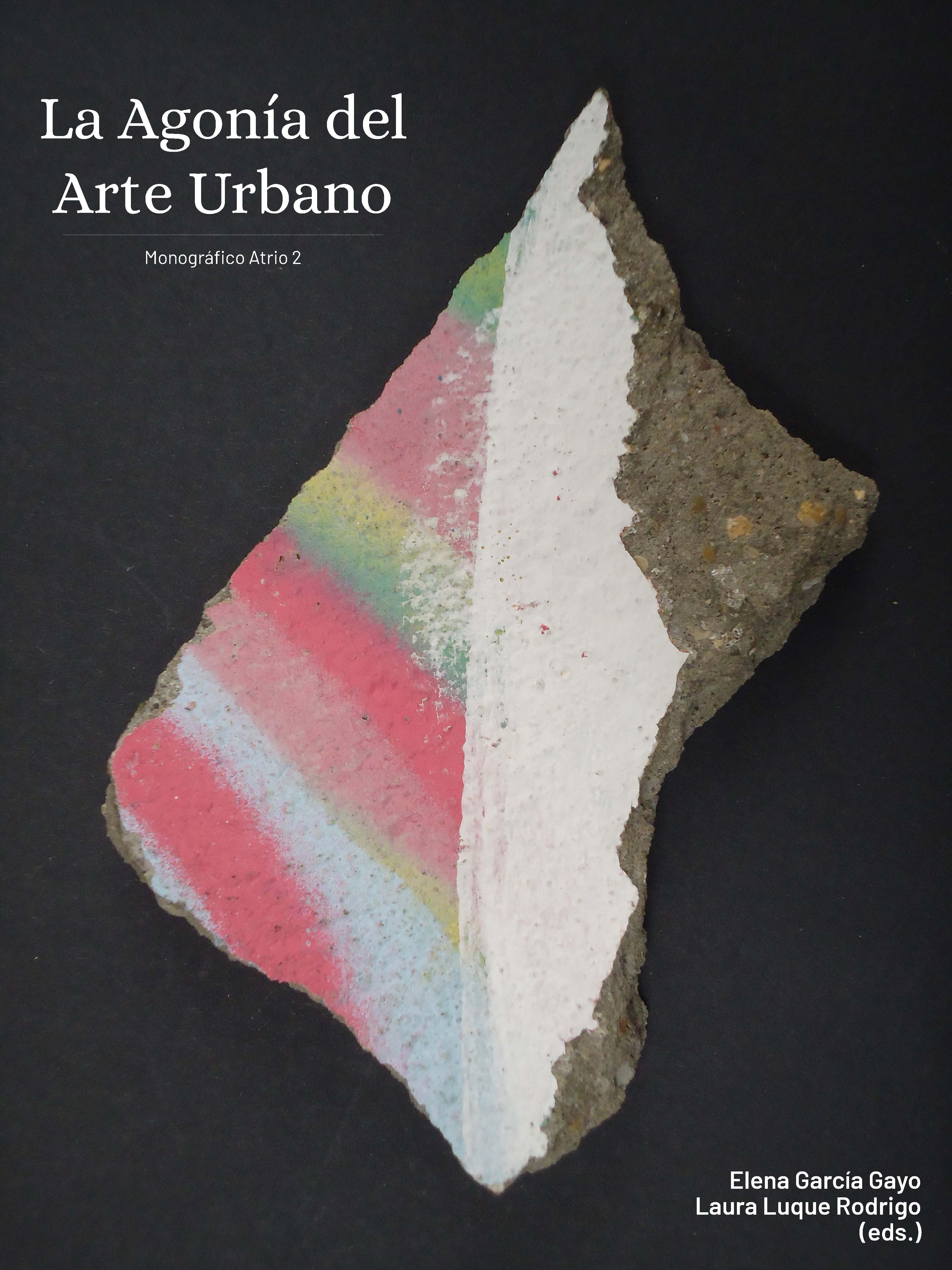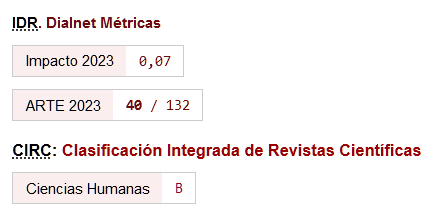Separation and Speed. The Private Image of Urban Art
DOI:
https://doi.org/10.46661/atrio.6299Keywords:
Image, Urban Art, Public Space, City, Speed, DistanceAbstract
The following text delves into a type of urban art that would account for the death of public space, manifesting in its images the predominance of private space. In order to do so, two projects presented at al zur-ich urban art meetings organized by Tranvía Cero collective in the south of Quito-Ecuador have been selected. Both projects offer a representative sample of the two ways in which the public and the private sphere converge; in other words, they are images that show how the intimate and domestic overflows into the public space and, vice versa, how what belongs to a public exterior takes refuge in a private interior. It was observed that the distance that separates the public from the private in art can be minimal when the images are the product of maximum speed, which is related to the indirect light provided by domestic and private technologies. Speed at which, uselessly, urban art resists.
Downloads
References
Fuentes bibliográficas
Arendt, Hannah. La condición humana. México D.F.: Paidós, 2016.
Bauman, Zygmunt. Comunidad: En busca de seguridad en un mundo hostil. Madrid: Siglo XXI, 2006.
Belting, Hans. Antropología de la imagen. Buenos Aires: Katz, 2007. DOI: https://doi.org/10.2307/j.ctvm7bcgx
Berger, John. Modos de ver. Barcelona: Gustavo Gilli, 2016.
Bourriaud, Nicolas. Estética relacional. Buenos Aires: Adriana Hidalgo, 2008.
Certeau, Michel de. La invención de lo cotidiano 1. México D.F.: ITESO, 2007.
Debord, Guy. La sociedad del espectáculo. Santiago: Naufragio, 1995.
Delgado, Manuel. “De la estructura al acontecimiento. El dentro y el fuera en la sociedad contemporánea.” Fundación Telefónica (2004): 17-25.
Didi-Huberman, Georges. Cuando las imágenes tocan lo real. Madrid: Círculo de Bellas Artes, 2018.
Duhau, Emilio; Giglia, Angela. Metrópoli, espacio público y consumo. México D.F.: Fondo de Cultura Económica, 2016.
Eco, Umberto. Apocalípticos e integrados. Barcelona: Lumen, 1984.
Escobar, Ticio. Imagen e intemperie. Madrid: Clave intelectual, 2015.
Gravano, Ariel. Antropología de lo barrial. Buenos Aires: Espacio, 2003.
Han, Byung-Chul. La salvación de lo bello. Barcelona: Herder, 2018.
Kronfle, Rodolfo. “Río revuelto.” Consultado el 4 de diciembre de 2018. http://www.riorevuelto.net/2010/11/el-comic-del-barrio-colectivo.html.
Rancière, Jacques. Disenso: Ensayos sobre estética y política. México D.F.: Fondo de Cultura Económica, 2019.
Romero, Pedro. “Un conocimiento por el montaje: Entrevista con Georges Didi-Huberman.” Minerva: Revista del Círculo de Bellas Artes #5 (2007): 17-22.
Sennett, Richard. El declive del hombre público. Barcelona: Península, 1978.
Sennett, Richard. Construir y habitar. Ética para la ciudad. Barcelona: Anagrama, 2019.
Simmel, Georg. “La metrópolis y la vida mental.” Bifurcaciones #004 (2005): 2-10.
Tranvía Cero, “AL ZUR-ICH 2003-2013” Quito, 2014. Consultado el 4 de noviembre de 2011. https://issuu.com/rodrigo7656/docs/libro_tranvi__a_cero_final_13
Vásquez-Vargas, Kléver. “El disfraz de lo público: El arte de lo urbano como otro espacio público”. Tesis doctoral, Universidad de Guadalajara, 2019.
Vásquez-Vargas, Kléver. “El grafiti y el barrio.” Indisciplinar Vol.3 (4) (2017): 96-114.
Virilio, Paul. La inercia polar. Madrid: Trama Editorial, 1999.
Webgrafía
Almeida, Pablo. “Encuentro al zur-ich.” Consultado el 22 de octubre de 2018. http://arteurbanosur.blogspot.com/
Published
How to Cite
Issue
Section
License
Copyright (c) 2021 Kléver Francisco Vásquez Vargas

This work is licensed under a Creative Commons Attribution-NonCommercial-ShareAlike 4.0 International License.
Los autores/as que publican en Atrio. Revista de historia del arte están de acuerdo con los siguientes términos:
- Los autores/as conservan los derechos de autor y garantizan a la revista el derecho de ser la primera publicación del trabajo al igual que licenciado bajo una licencia de Creative Commons Attribution-NonCommercial-ShareAlike 4.0 International License que permite a otros compartir el trabajo con un reconocimiento de la autoría de este y la publicación inicial en esta revista.
- El autor/a o cedente del material que se entrega para su publicación autoriza a la revista para que publique, sin obligación alguna (económica o de otra naturaleza), el contenido del referido manual tanto en formato papel, como en digital, así como en cualquier otro medio. Esta cesión de uso del material entregado comprende todos los derechos necesarios para la publicación del material en la revista. Quedan garantizados, simultáneamente, los derechos morales del autor
- El autor/a o cedente es plenamente consciente y está de acuerdo con que todos o cualesquiera de los contenidos proporcionados, formarán una obra cuyo uso se cede a la revista para su publicación total o parcial.
- El autor/a o cedente garantiza ser el titular de los derechos de Propiedad Intelectual sobre los contenidos proporcionados, es decir, sobre el propio texto e imágenes/fotografías/obras fotográficas que se incorporan en su artículo.
- El autor/a o cedente asegura y garantiza: (i) que todo el material enviado a la revista cumple con las disposiciones legales aplicables; (ii) que la utilización de cualquier material protegido por derechos de autor y derechos personales en la concepción del material se encuentra regularizada; (iii) que obtuvo las licencias de derechos, permisos y autorizaciones necesarias para la ejecución del material, inclusive los derechos de imagen, si fueran aplicables; y (iv) que el material no viola derechos de terceros, incluyendo, sin limitarse a estos, los derechos de autor y derechos de las personas.
- El autor/a o cedente, exime a la revista de toda y cualquier responsabilidad con relación a la violación de derechos de autor, comprometiéndose a emplear todos sus esfuerzos para auxiliar a la revista en la defensa de cualquier acusación, medidas extrajudiciales y/o judiciales. Asimismo, asume el abono a la revista de cualquier cantidad o indemnización que esta tenga que abonar a terceros por el incumplimiento de estas obligaciones, ya sea por decisión judicial, arbitral y/o administrativa.













